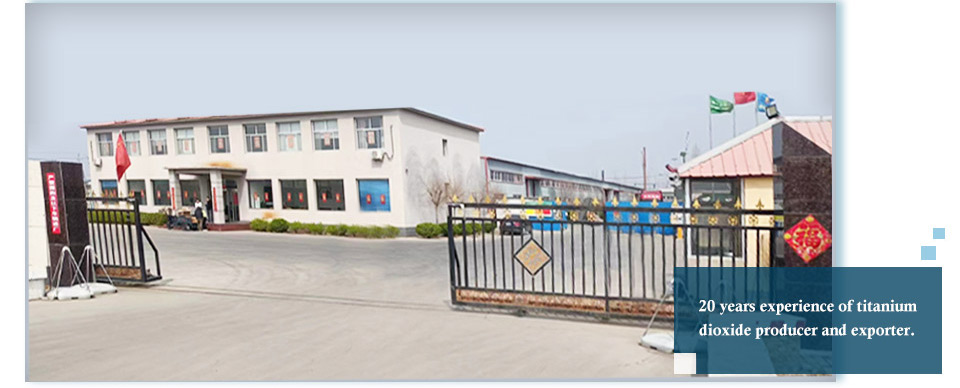
снеж . 26, 2024 06:53 Back to list
Production of Anatase and Rutile Titanium Dioxide in Modern Manufacturing Facilities
The Production and Applications of Anatase and Rutile A Comprehensive Overview
Anatase and rutile are two distinct crystalline forms of titanium dioxide (TiO2), each possessing unique characteristics that make them suitable for various industrial applications. Their importance cannot be overstated, as they play a vital role in sectors ranging from pigments to electronics, and even environmental remediation. This article delves into the production processes, properties, and applications of anatase and rutile, as well as their significance in modern industries.
Production Processes
The manufacturing of titanium dioxide typically involves two primary processes the sulfate process and the chloride process. Each of these methods can yield either anatase or rutile, depending on the specific conditions utilized during production.
1. Sulfate Process This method involves the treatment of titanium-bearing ores, such as ilmenite, with sulfuric acid. The resultant titanium sulfate solution is then hydrolyzed to precipitate titanium dioxide. While this process tends to produce primarily anatase, it can be manipulated to obtain a mixture of both forms.
2. Chloride Process In contrast, the chloride process uses titanium ores that are reacted with chlorine, yielding titanium tetrachloride (TiCl4). This intermediate is then oxidized to produce titanium dioxide. The chloride process is known for yielding predominantly rutile due to the high temperatures employed during the oxidation stage, which favor the rutile phase.
Both processes have undergone technological advancements to enhance yield and reduce environmental impact, making the production of anatase and rutile more sustainable.
Properties of Anatase and Rutile
Despite being composed of the same chemical compound, anatase and rutile exhibit differing physical properties due to their crystalline structures.
- Anatase This form of titanium dioxide is characterized by its tetragonal crystal structure, which contributes to its higher photocatalytic activity compared to rutile. Anatase has a lower density and can absorb ultraviolet (UV) light more effectively, making it an excellent choice for applications in photocatalysis, such as water purification and self-cleaning surfaces.
anatase and rutile factories

- Rutile Rutile, on the other hand, possesses a more stable tetragonal structure that gives it superior thermal and chemical stability. This robustness contributes to its pigmentary properties, making rutile the preferred choice for the manufacture of white pigments widely used in paints, coatings, plastics, and paper. Additionally, rutile’s reflective properties make it ideal for use in optical applications, including lenses and sensors.
Applications of Anatase and Rutile
The applications of anatase and rutile are broad-ranging and encompass several industries.
1. Pigments Rutile titanium dioxide is primarily used as a white pigment in paints, coatings, and plastics. It provides excellent coverage, durability, and resistance to discoloration over time, making it a staple in the paint industry. Anatase, although less commonly used for pigments due to its lower stability, can be found in specialized applications, such as in certain types of coatings and cosmetic products.
2. Photocatalysis Anatase’s superior photocatalytic properties make it a popular choice for environmental applications. It is utilized in water treatment processes to degrade organic pollutants and is incorporated into building materials to produce self-cleaning surfaces. These applications are increasingly significant as society looks for sustainable and eco-friendly solutions to tackle pollution.
3. Electronics Both forms of titanium dioxide find applications in the electronics sector. Rutile is used in semiconductor devices due to its electrical properties, while anatase's photocatalytic capabilities make it useful in sensors and solar cells.
4. Nanotechnology With the emergence of nanotechnology, both anatase and rutile are being explored for their potential in nanostructured materials. Their nanocrystalline forms exhibit unique properties that can be harnessed for innovative applications in various fields.
Conclusion
In summary, anatase and rutile are essential forms of titanium dioxide, each with unique properties and diverse applications across different industries. The production processes of these minerals continue to evolve, aiming for greater efficiency and environmental sustainability. As the demand for advanced materials grows, both anatase and rutile are expected to play critical roles in future technological innovations, reinforcing their importance in our industrial landscape. Their versatility and functionality ensure that titanium dioxide remains a vital component in manufacturing and environmental applications alike.
-
China Lithopone in China Supplier – High Quality Lithopone ZnS 30% Powder for Wholesale
NewsJun.10,2025
-
Top China Titanium Dioxide Company – Premium TiO2 Powder Supplier & Manufacturer
NewsJun.10,2025
-
Fast Shipping 99% Pure TiO2 Powder CAS 13463-67-7 Bulk Wholesale
NewsJun.10,2025
-
Top China Titanium Dioxide Manufacturers High-Purity R996 & Anatase
NewsJun.10,2025
-
Lithopone MSDS Factories - Production & Quotes
NewsJun.10,2025
-
High-Quality Titanium Dioxide in Water Suppliers - China Expertise 60
NewsJun.09,2025
